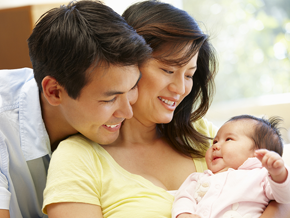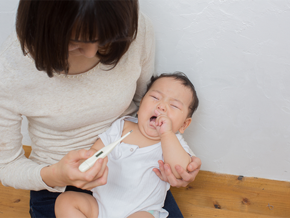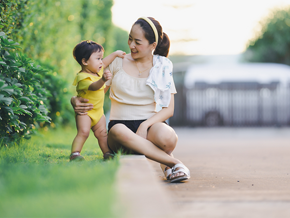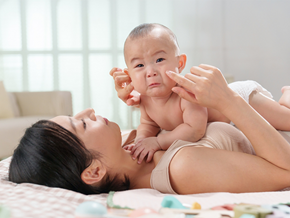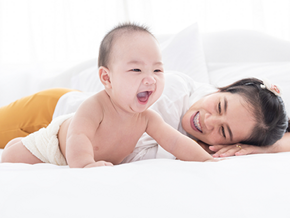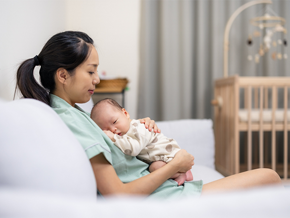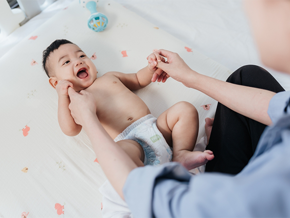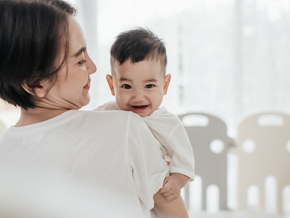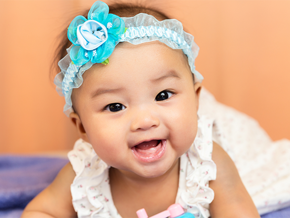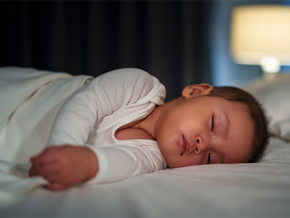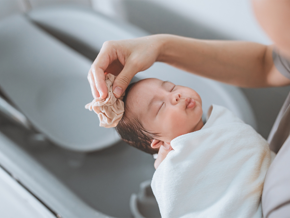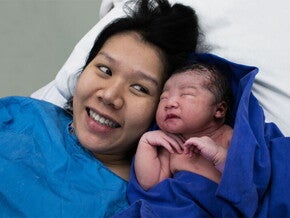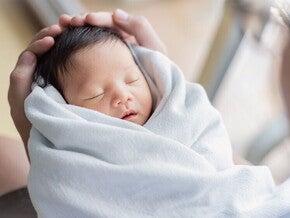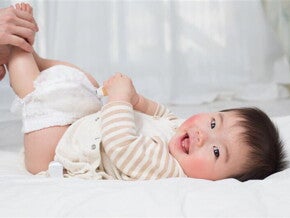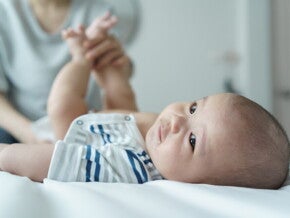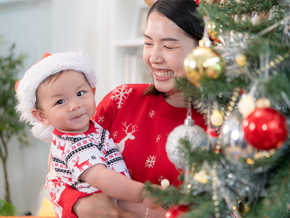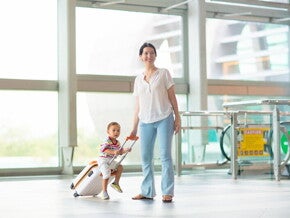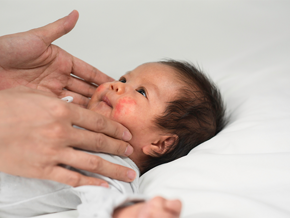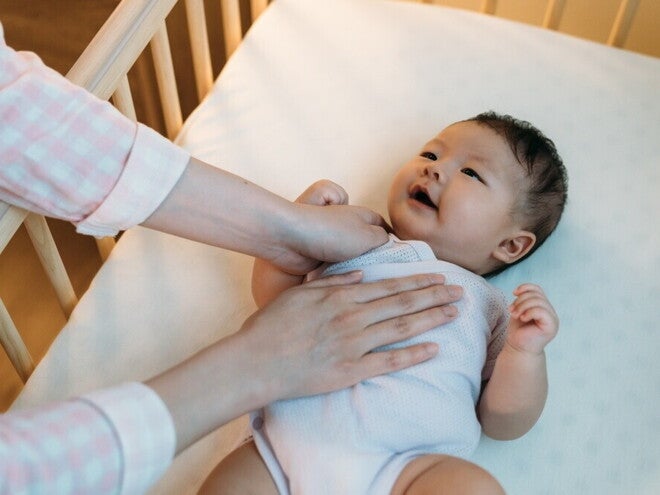
Baby Sleeping Position Basics: What's Safe, What's Not, and Why
When you finally get your baby to sleep (hallelujah!), the last thing you want is to worry about whether they’re safe. How dangerous can sleeping be, right? Apparently, very. Sudden Infant Death Syndrome (SIDS) isn’t something to shrug off. However, you can reduce the risk because how your baby sleeps is just as important as how much they sleep. In this guide, we’ll talk about the safest baby sleeping position, plus how you can create a sleep environment that gives you peace of mind (and maybe a little more sleep for you, too).
The Safest Baby Sleeping Position
You might have heard that putting your baby on their back is the best sleeping position. This isn’t just a suggestion. It’s a lifesaving habit, especially if you swaddle them! According to the American Academy of Pediatrics (AAP), this method has helped lower SIDS rates worldwide. The Back to Sleep campaign in the ’90s even saw a 50% decline in the SIDS mortality rate.
When babies sleep on their backs, their airways stay clearer, lessening the chance of breathing obstructions. It might feel nerve-wracking at first, especially if you're worried about spit-up or reflux, but rest assured: healthy babies have natural reflexes to protect their airways, even while lying on their backs.
Will my baby choke if they sleep on their back?
It’s a common worry, but the short answer is no. Healthy babies are less likely to choke when sleeping on their backs.
Babies have natural reflexes that help protect their airways. With this baby sleeping position, their windpipe (trachea) is above the esophagus, the tube that carries food. So if your baby spits up, gravity helps keep the milk or fluid away from the airway, not toward it. But if your baby is on their tummy, there’s a greater chance of fluid pooling around the trachea, which could pose more of a choking risk.
According to the AAP, back-sleeping is still safest even for babies with reflux. Unless your pediatrician gives specific instructions otherwise, your default baby sleeping position should be on their back. Rest easy, parents: it’s the best way to protect your little ones while they snooze.
What if my baby rolls over in their sleep?
Once your baby learns to roll over—that's usually around 4 to 6 months—it’s okay to let them find their own sleep position. You should still always place your baby on their back to sleep at the start of every nap and bedtime, but if they roll onto their stomachs on their own, there's no need to keep repositioning them.
Won’t sleeping on their back flatten my baby’s head?
Not only are you worried about your baby sleeping safely, but you’re also stressed about having to dodge comments from the titas about your baby’s head shape. It’s a common concern. Truth is sleeping on the back can sometimes lead to positional plagiocephaly or flat head syndrome. It happens when a baby’s head rests in the same position for long periods, especially during those early months when their skulls are still soft and developing.
You can prevent flat spots while practicing safe sleep. Pediatricians recommend giving your baby plenty of supervised tummy time while they’re awake, changing their head position during naps, and occasionally alternating the direction they face in the crib. You can also carry your baby more often during the day to relieve pressure on the back of the head.
Flathead syndrome improves with time and does not affect brain development. So yes, again, always put your baby to sleep on their back, but feel empowered knowing you can take little steps during the day to preserve that perfectly round, super cute noggin!
Baby Sleeping Positions to Avoid
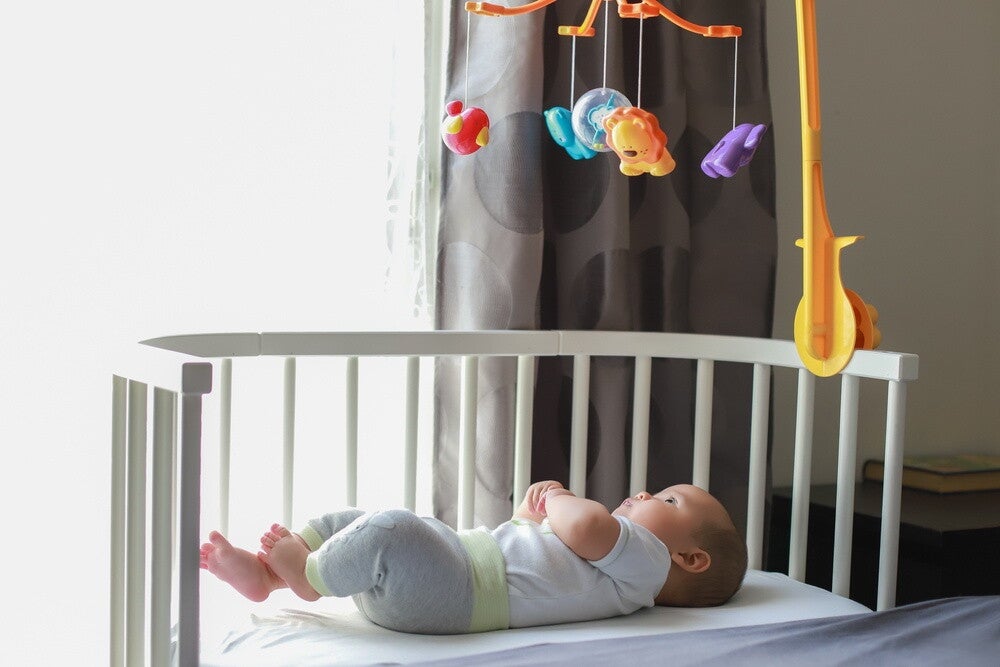
Whether you’re co-sleeping or sleep training, avoid big pillows, blankets, and other loose objects where your baby dozes off. Also remember: Back is best!
As a parent, you want your baby to sleep peacefully—and safely. But the truth is, not all baby sleep positions are created equal. Some may look cute or cozy but can increase the risk of suffocation. Here are unsafe sleep positions to avoid.
1. Tummy sleeping (prone position)
Did a tita tell you that her babies slept on their tummies and turned out fine? Well, she was lucky. Research says babies who sleep on their stomachs have a significantly higher risk of SIDS. Their little airways can get blocked, or they might rebreathe exhaled air, which lowers oxygen levels. Until they can roll both ways on their own, always place your baby on their back to sleep.
2. Side sleeping
It might seem like a good compromise—not quite on the tummy, not quite on the back. But side sleeping isn’t stable for infants. Babies can easily roll onto their stomachs during sleep, especially as they get a little wriggly. Remember: back is best.
3. Propped-up positions or inclined sleepers
Your loungers and car seat naps might be working double duty as a nap bed. You might have seen those adorable inclined pillows or bolster mattresses in your favorite online shop. While they might look comfy, inclined surfaces (anything over 10 degrees) are not safe for unsupervised sleep. They can cause your baby’s head to fall forward, blocking their airway.
Save the bouncers and rockers for awake time only. As for inclined pillows, check with your doctor if your baby needs them.
4. Sleeping on a pillow, couch, or adult bed
It happens—those middle-of-the-night feeds, the accidental couch doze-off. However soft surfaces and adult beds are not designed for infant safety. They increase the risk of suffocation, entrapment, and falls. If you do co-sleep, make sure it’s done following strict safe-sleep guidelines.
5. Sleeping on your chest (unattended)
Remember those heart-melting skin-to-skin snuggles, especially in the early days? Chest sleeping can be safe while you're awake and alert. But if you’re feeling sleepy, it’s time to transfer your baby to a safe, flat sleep surface on their back.
Creating a Safe Sleep Environment for Your Baby
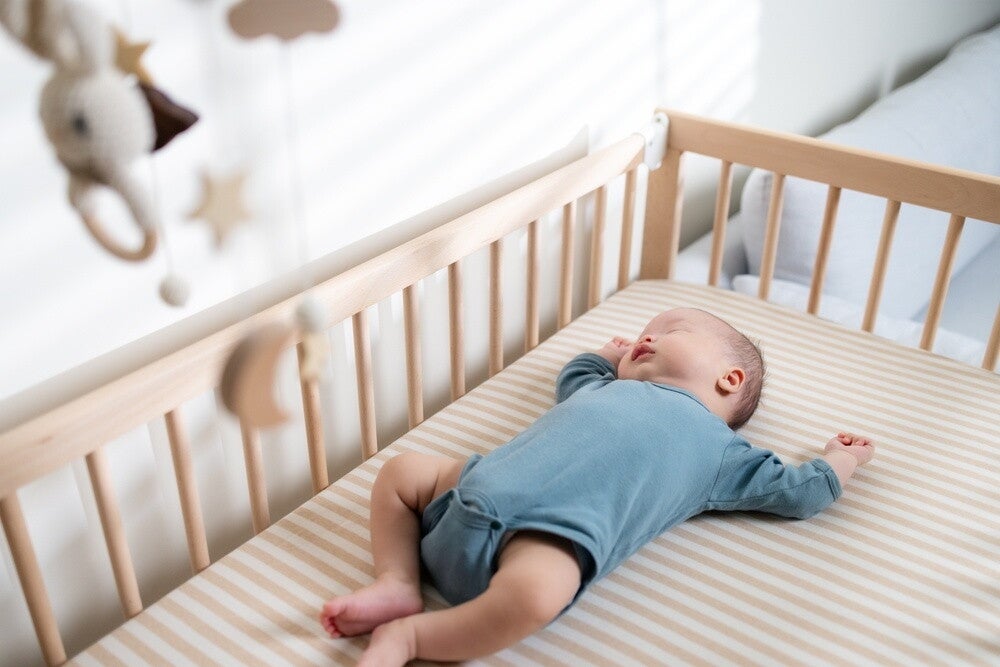
A rule of thumb when it comes to “designing” your baby’s crib? Simple is best. Skip the frills and go for safe.
Whether you’re co-sleeping or sleep training, a safe sleep environment is key to your baby’s well-being and your peace of mind.
- Use a firm, flat sleep surface. Whether it’s a crib, bassinet, or a co-sleeper attached to your bed, make sure it’s designed for infant sleep and isn’t too soft.
- Keep the sleep area clutter-free. Skip the pillows, heavy blankets, bumpers, or stuffed toys. These can pose a suffocation risk.
- Always place your baby on their back to sleep. Again, this should be your automatic baby sleep position.
- Room-share without bed-sharing when possible. Keep your baby in your room but in their own safe space—especially in the first 6–12 months.
- If you do co-sleep, take extra precautions. Avoid soft mattresses and loose bedding, and never co-sleep if you’re overly tired, have taken medication, or have consumed alcohol.
- Dress your baby for the room, not the blanket. Use a sleep sack or wearable blanket instead of loose covers.
- Maintain good airflow. A fan or slightly open window can help reduce overheating and improve air circulation.
You don’t have to give up closeness to keep your baby safe. With a few mindful changes, you can create a sleep setup that works for your family.
So Is Tummy Time Unsafe?
Tummy time is when placing your baby in the prone position is encouraged! While sleeping on their back is safest, supervised tummy time during the day helps your baby build the muscles they need for important milestones like rolling over, sitting up, and eventually crawling. Just a few minutes a day, starting from the newborn stage can make a big difference in strengthening their neck, shoulders, and upper body.
Lay them down on a clean, flat surface while you stay close by, talking or playing to keep things fun. Think of it as a mini workout, complete with adorable grunts, tiny pushes, and all!
FAQs About Safe Baby Sleeping Positions
What is the best sleeping position for a baby after feeding?
You already know the answer to this one! The safest sleeping position for a baby after feeding is on their back. Even if your little one has reflux or spit-up, placing them on their back significantly reduces the risk of SIDS, according to the AAP.
To minimize discomfort, keep your baby upright for about 20 to 30 minutes after feeding before laying them down. But again: always back to sleep, never on their stomach or side.
What is the best sleeping position for a baby with a blocked nose?
The safest sleeping position for a baby with a stuffy nose is still flat on their back. While it may seem like propping them up would help with congestion, using pillows or incline sleepers can increase the risk of suffocation. Instead, try using a cool-mist humidifier, gently suctioning mucus with a bulb syringe, or using saline drops to ease breathing. Keep the crib clear and your baby on their back.
When is SIDS no longer a risk?
The risk of SIDS significantly decreases after a baby’s first birthday, with the highest risk period between one and four months of age. However, safe sleep practices, such as putting your baby on their back to sleep, using a firm mattress, and keeping soft objects out of the crib, should continue until they’re one to ensure a safe sleep environment as they grow.
Remember, there’s only one safe baby sleeping position: on their back! Opt for a simple sleep environment free from frills like pillows, blankets, and stuffed animals. Book your child in for some tummy time. In the blink of an eye, you and your baby will be snoozing worry-free!
References
National Institute of Child Health & Human Development. (2007). Infant sleep position and SIDS: Questions and answers for health care providers. In https://www.nichd.nih.gov/sites/default/files/publications/pubs/documen… (No. 07–7202). U.S. DEPARTMENT OF HEALTH AND HUMAN SERVICES.
Safe sleep. (n.d.). https://www.aap.org/en/patient-care/safe-sleep/
Helping babies sleep safely. (2024, September 25). Reproductive Health. https://www.cdc.gov/reproductive-health/features/babies-sleep.html










